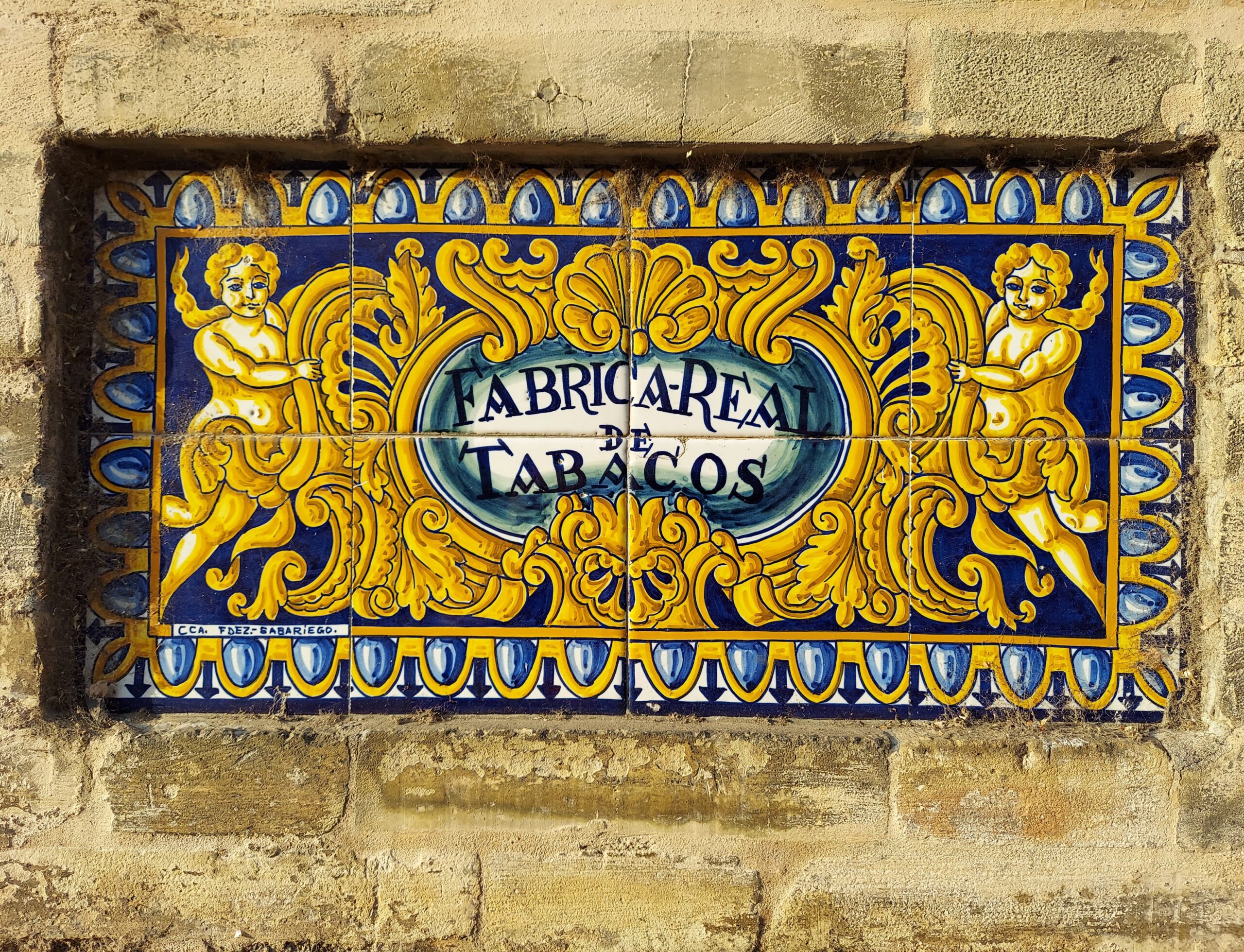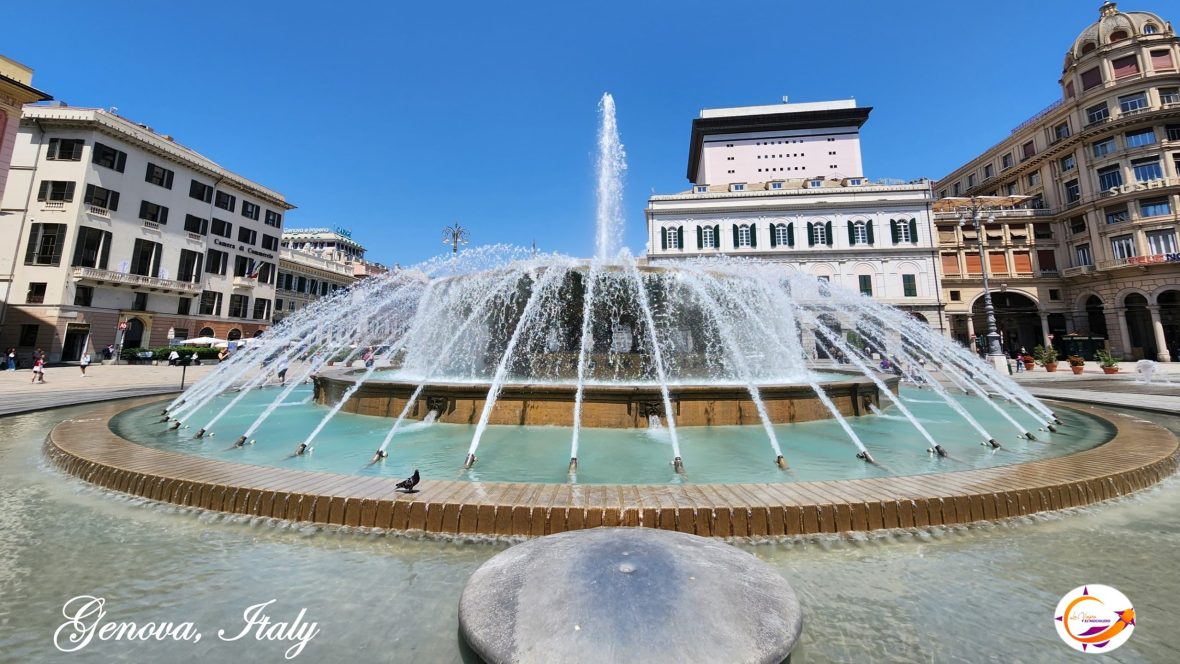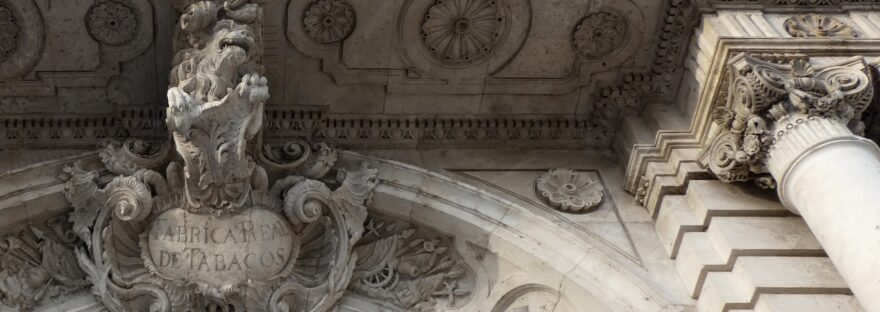Due to its large dimensions it is catalogued by some as the “Escorial tabaquero”, or the Palace of the (Tobacco) Industry. Surely they are not mistaken, the Royal Tobacco Factory of Seville is undoubtedly the largest industrial building of the eighteenth century and the best architecture of its kind in Spain. In addition, it is one of the oldest of this type of structure that is preserved, being the headquarters of the first tobacco factory established in Europe.
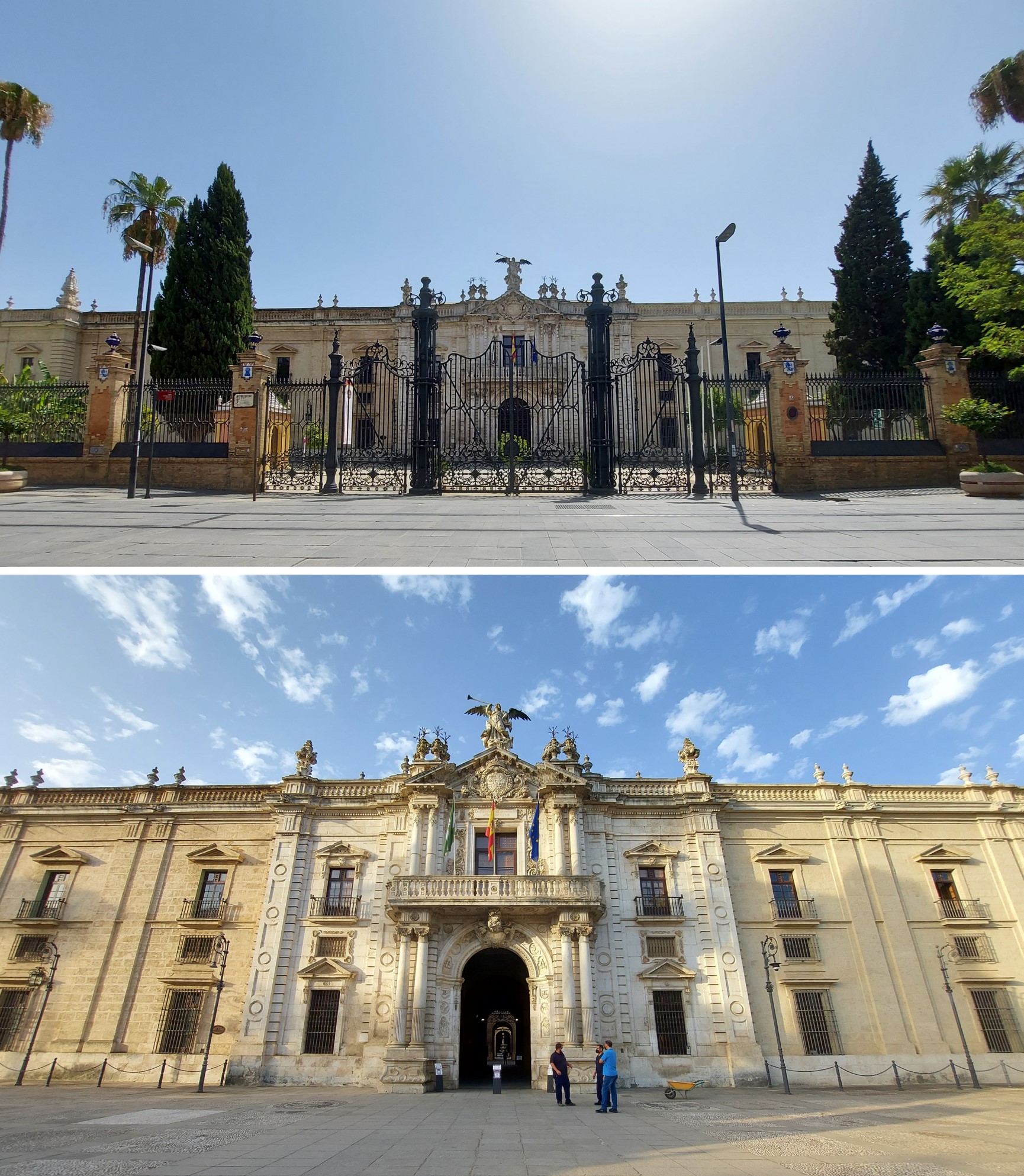
The Royal Tobacco Factory has been classified as a “Cultural Asset of Interest” since 1959, within the category of Historical Monument. Since the mid-twentieth century it has housed the headquarters of the rectorate of the University of Seville and some of its faculties, such as the Faculties of Geography and History and Philology.
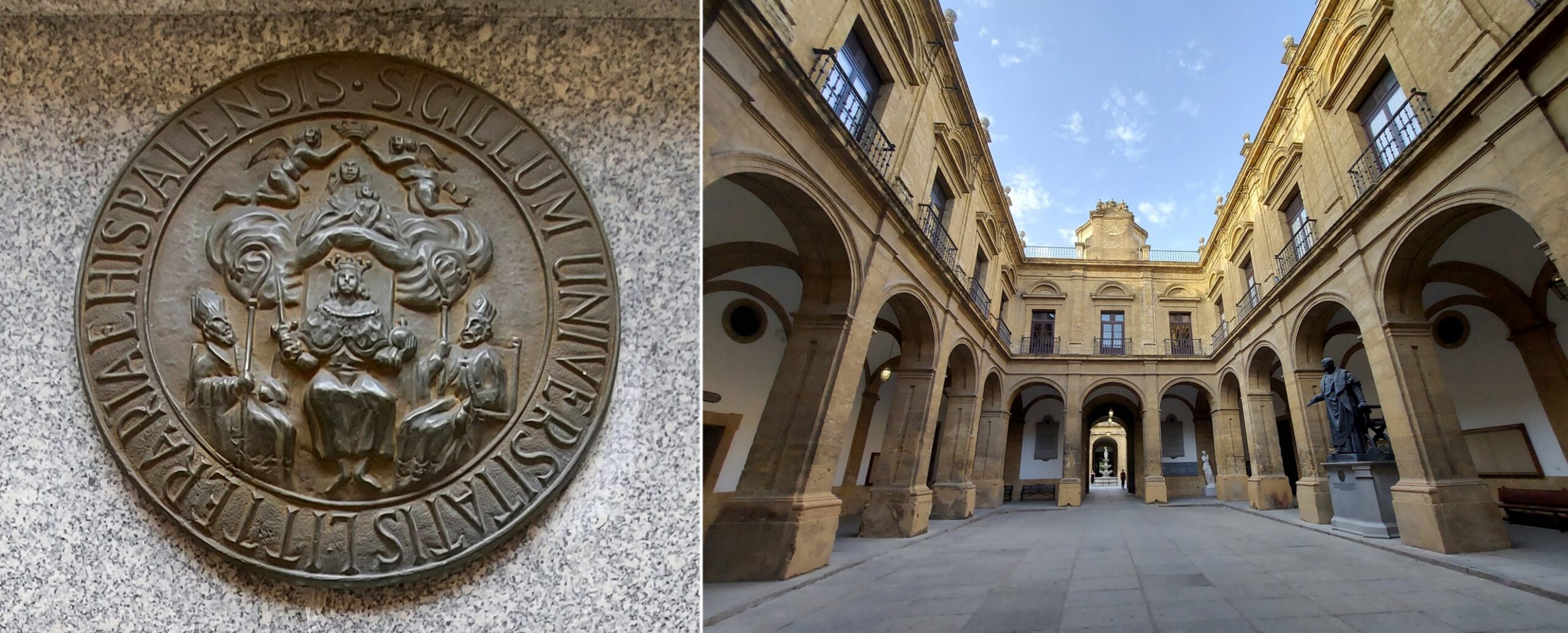
The construction of the Royal Tobacco Factory of Seville began in 1728. Its design and construction was carried out by Spanish military engineers. It was located outside the city walls, near the “Puerta de Jerez”, the “Colegio de San Telmo” and the convent of “San Diego”.
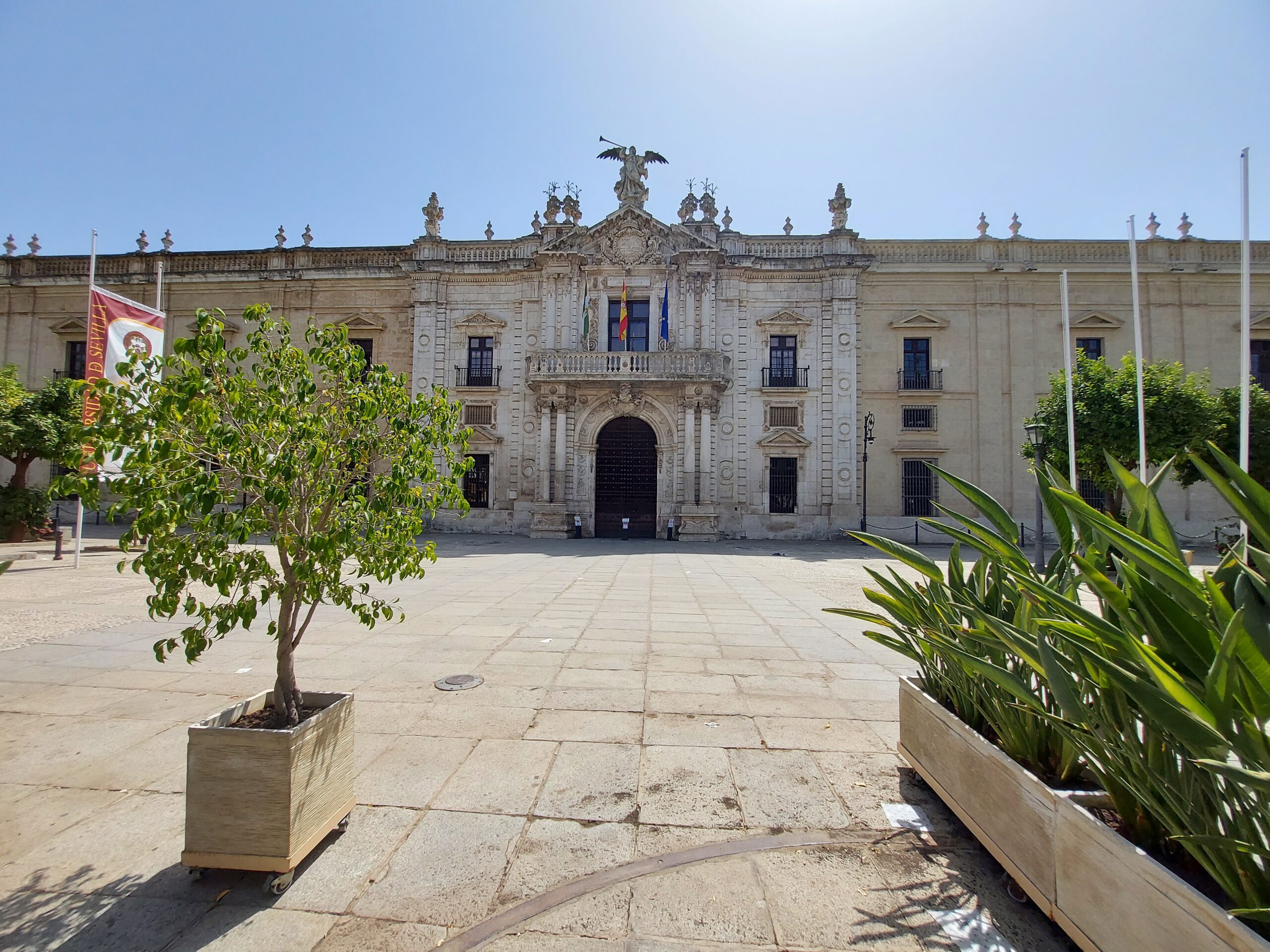
The building has a foundation with inverted arches. This construction technique was used for irregular terrain and helped to reinforce the brick footings and the foundation against seismic movements. Morón stone, a very solid stone, was used in the construction of walls, pilasters, arches and other elements. In terms of architectural styles, the Renaissance style stands out in general, with a Herrerian air in its floor plan, patios and details of the facades.
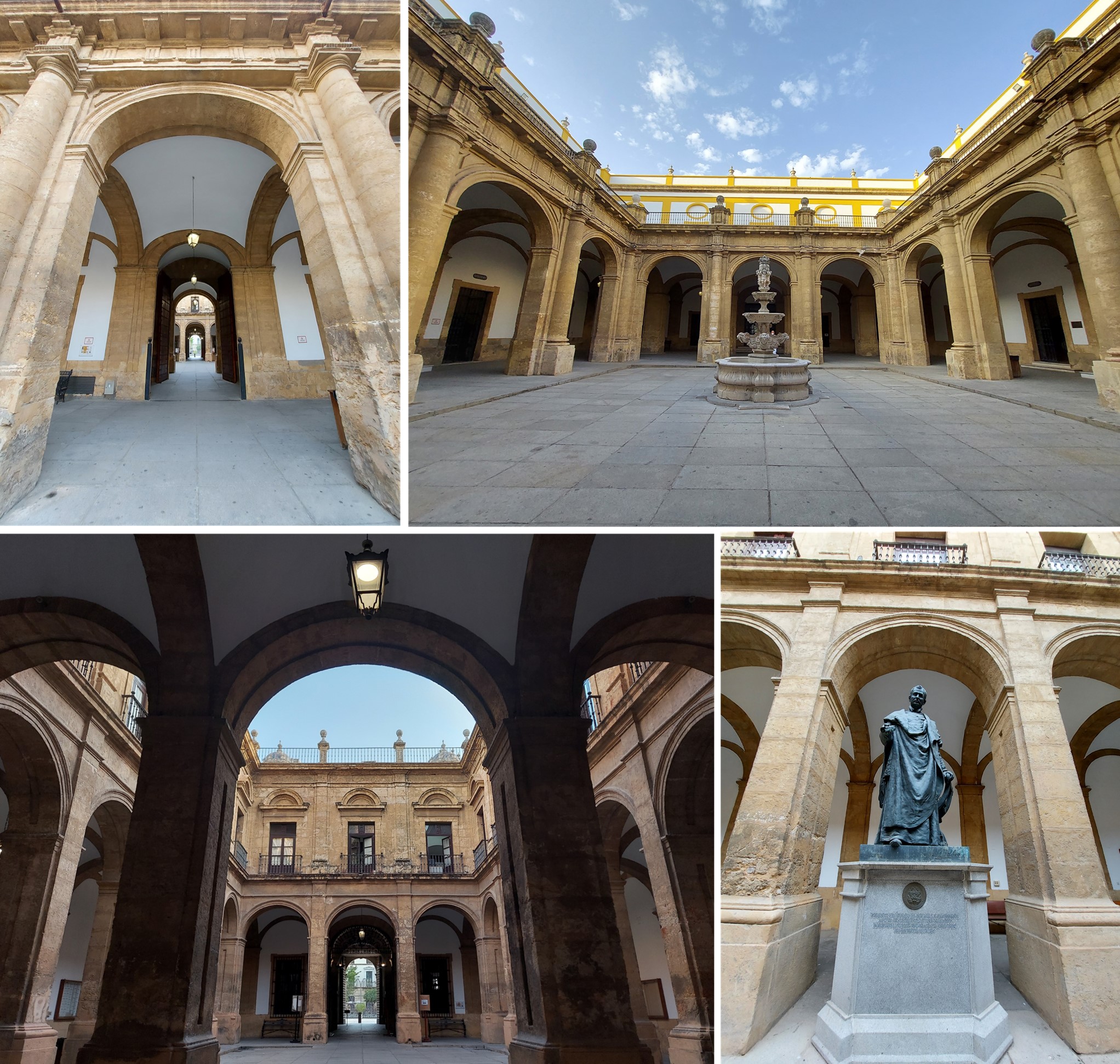
As a building, the Royal Tobacco Factory extends over a rectangular area of 185 x 147 meters. In Spain, only the monastery of “El Escorial” exceeds its size. The enclosure is surrounded on three sides by a moat that isolates it from the outside.
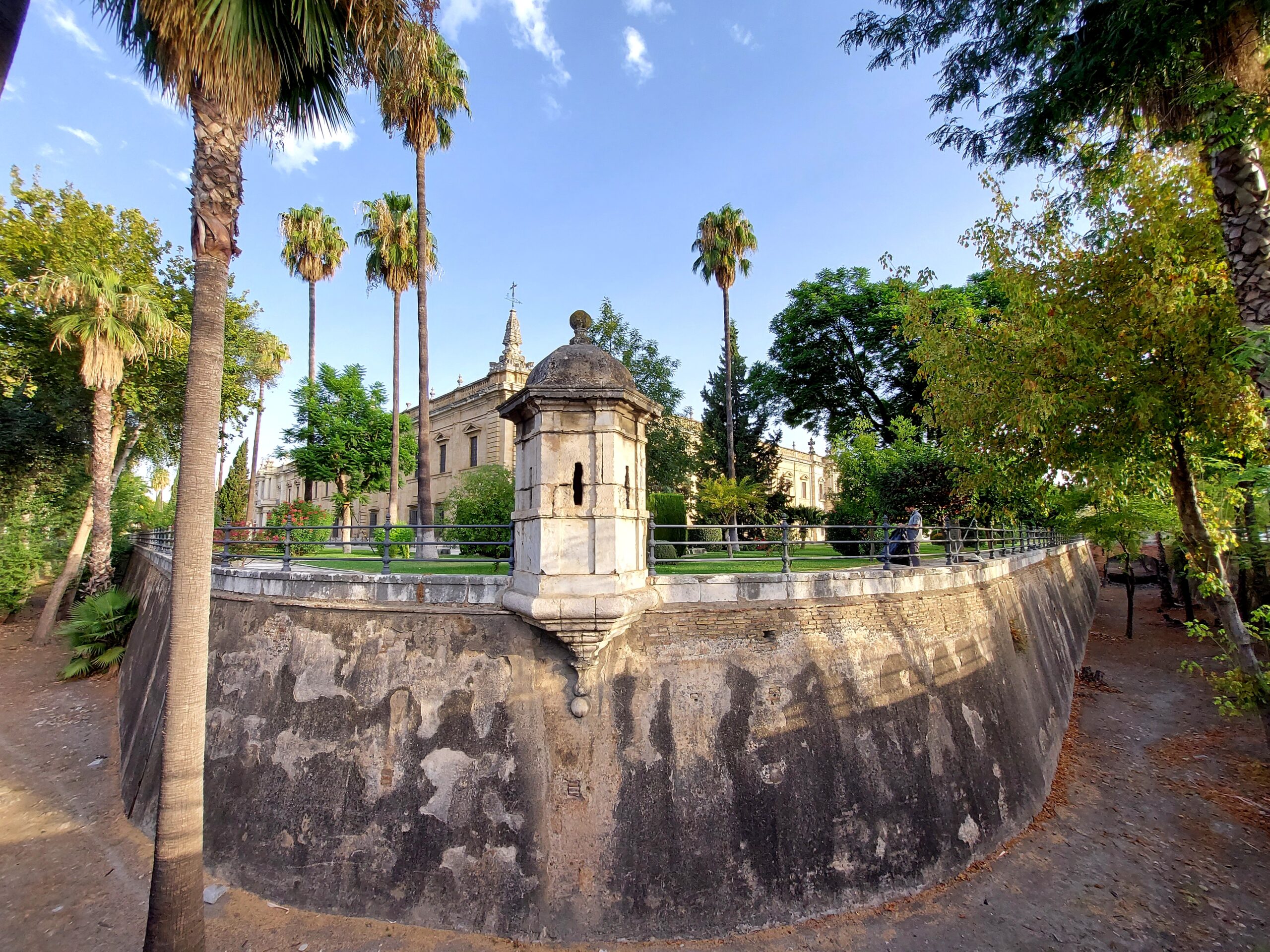
Two different areas can be distinguished in the building, the first is dedicated to the tobacco manufacturing activity, occupying two thirds of the building. The other area, one of a more palatial character, is where the lobby, warehouses and living quarters are located.
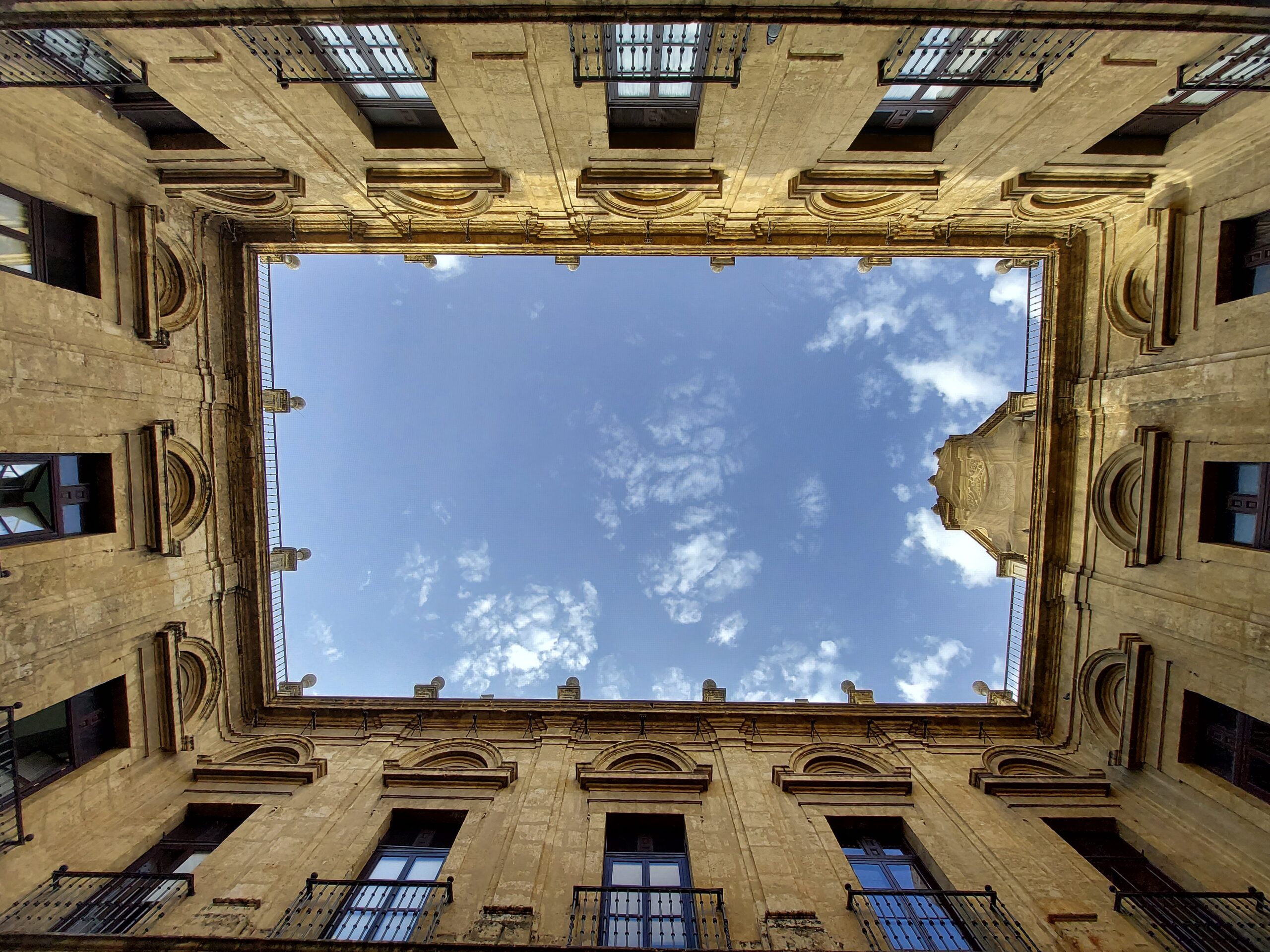
Its main facade has very elegant details where the influence of the baroque style can be appreciated. On the upper floor, we can see a balustraded balcony and a tympanum decorated with royal symbols. Above, there is a statue of “Fame”, and vases of lilies, works of Cayetano de Acosta. In the entrance arch there are reliefs with themes related to the history and elaboration of tobacco.
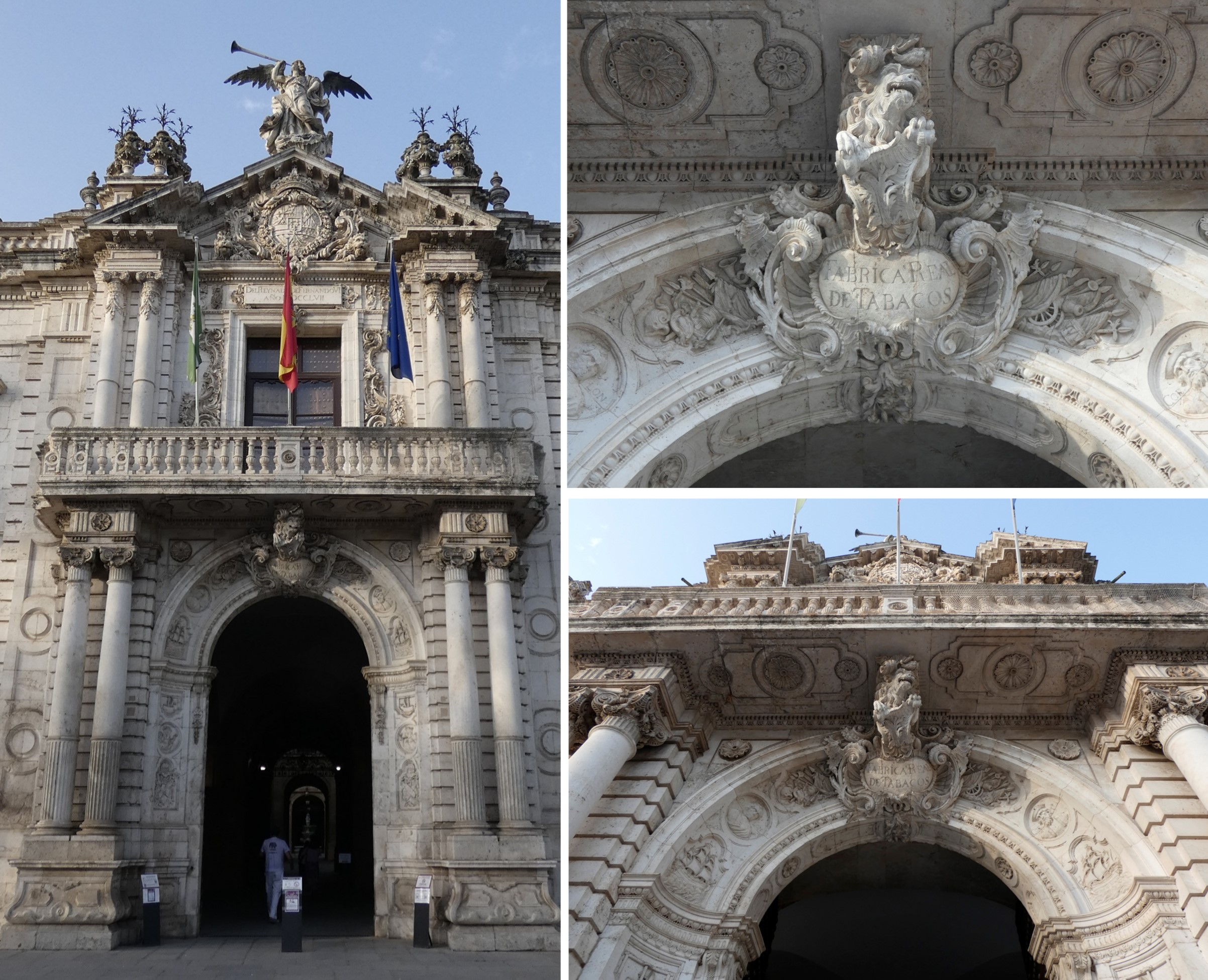
Having the opportunity to approach the most important industrial building in Spain in the 18th century was a great experience.
